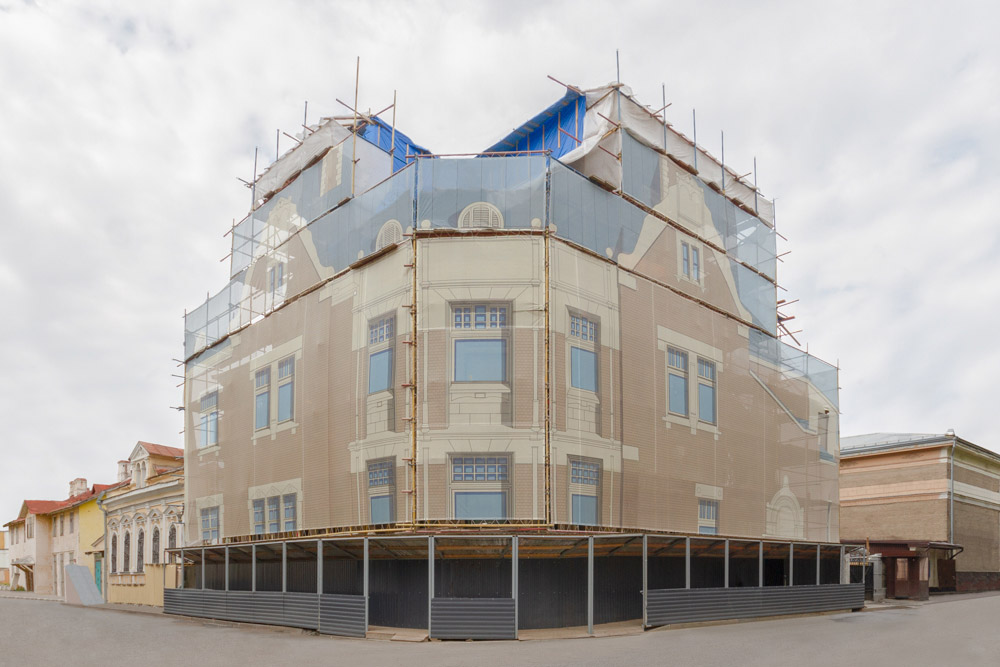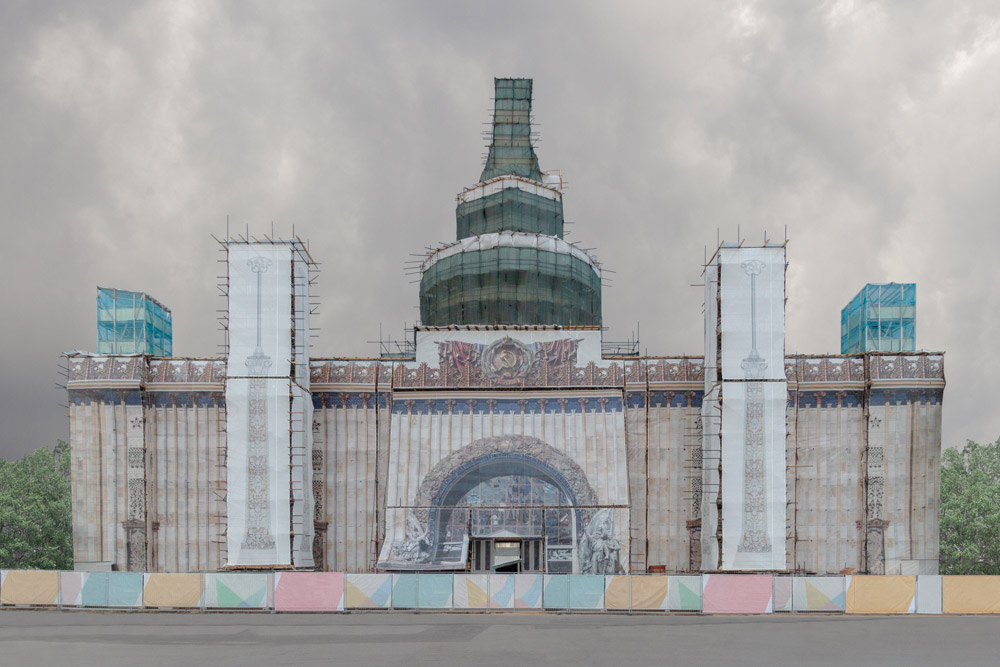blog
Interview with photographer Olya Pegova

Kunststück ©Olya Pegova
F-Stop Magazine: How did you first become involved in photography and what led to you working in this medium as an artist?
Olya Pegova: I took up photography not so long ago, about four years ago. Now it seems to me that I wanted to do it all my life, but for some reason I didn’t do it. When I consciously took up photography, it was like everything changed for me in one moment. I left my full-time job, graduated from the School of Modern Photography Docdocdoc and devoted myself entirely to photography. Sometimes I feel like up until that moment, I was asleep and I’m just now starting to live. Photography for me is an opportunity to talk, to have a dialogue in the language I know.
F-Stop: The current issue of F-Stop Magazine includes images from your project “Kunststück,” can you tell us about this project?
OP: I worked on the Kunststück series during 2018-2019, shooting in big Russian cities. A few years before that, a law had been passed in Moscow that historical buildings and monuments in Moscow, when restored, must be covered with the faux facades, imitating the facades of buildings, floors, elements of the structure. Faux facades have become widespread not only in Moscow, but also in many large cities in Russia. While working on the project I realized that we do not really know what’s hidden behind the faux facades: a historical monument awaiting reconstruction, a building in a state of disrepair concealed from the public eye, new construction space or just an empty spot.
I wanted to capture the contemporary architectural landscape of large cities in Russia, by documenting the presence of faux facades in it. To convey the feelings I have when I see them in the space of a city. Any city is formed as a system of facades. We perceive it as an environment and we perceive it through them. I was looking for places where I could shoot faux facades and asked my friends to send me locations. At first everyone said there were hardly any in the city, and if they appeared, they disappeared very quickly, but then everyone began to see them everywhere.
Faux facades have blended so harmoniously into the space of the modern city that they often go unnoticed. And if earlier they were rare and temporary interventions in urban spaces, today they have become a part of the landscape of the metropolis, only being changed from time to time. A drawn-over reality fills in the modern city landscape, shaping our perception of the world.
Faux facades are copies without the original, what they depict does not repeat what is now, was or will be. They are independent architectural objects that exist in a certain limited period of time in the space of the city, some of them are quite durable. Presence of faux facades in the urban landscape for several years can be compared to temporary architecture. The destroyed building on the wall of which a faux facade was placed seems to be a full-fledged building, but without it, only the ruined wall remains, and several buildings surrounded by the same type of faux facade become a single architectural structure. They create a deceptive resemblance to reality and at the same time some kind of unreality of the surrounding reality. As I said before, we can never know exactly what’s behind them.
In my work, I bring changes into the city landscape by means of digital editing examine our sense of the surrounding environment and of its reality. The landscapes in the photographs look familiar, but it is no longer clear what actually exists and what has been changed digitally and now only deceptively resembles the reality.

Kunststück ©Olya Pegova
F-Stop: You say these facades are quite common, living in the United States I have never seen such elaborate and interesting facades, is this really what the facades are like or have you edited them in some way?
OP: In Russia special construction green safety netting is used during construction work and for emergency buildings. But now, primarily in big cities, this safety netting has been replaced by faux facades. They may indeed look like real building facades. But we don’t really know what’s behind them. Faux facades really existed in the urban space during my work on the project; some of them still exist today.
F-Stop: What is your process for making these images or your creative process more generally?
OP: We used to think of photography as documentary authenticity, proximity to reality, and despite the fact that this position has changed a lot, in many ways it still seems so. I see photography more as a system of different codes than as a direct message. In the Kunststück project I document faux facades in urban spaces, but at the same time I use digital manipulation, reflecting on our perception of the environment and its reality.
F-Stop: What do you hope people experience or feel when they look at your photographs?
OP: I probably can’t answer that question. I think everyone has to go through this experience themselves. Sometimes people write to me then my project is published somewhere and everyone sees something different in my work, for me as an author, it is very valuable. For example, I was very interested to learn that you had never seen such faux faсades before and that it is not common in the United States. In Russia and as far as I saw a few years ago in Europe, faux faсades are quite common in central cities.

Kunststück ©Olya Pegova
F-Stop: Do you have a favorite image in this series? If so, which one and why is it the image that speaks to you most?
OP: Shooting architecture in an urban space is quite difficult, especially if it’s a metropolis. I have some kind of story associated with many works. And even after a while, I find it difficult to separate the personal emotional context of the work from its visual part and to isolate one. Probably my favorite work in this series is the one at the train station in Nizhny Novgorod (big city of Russia).(image is above) I rarely include it in the short selection, because it is a little out of the series. But I really like it. While other faux facades imitate with their image the facades of buildings, often monuments, something permanent, immovable, monumental, then here it depicts a vending kiosk with a window display and products. I don’t know what is under this faux facade, really a vending kiosk or just a wall. But it is very interesting in the context of the urban landscape in general, because even the most insignificant architecture (like a vending kiosk) becomes a full-fledged participant in the urban landscape. Anything could have been printed on that faux facade, but it was this vending kiosk that organically blended into that landscape.
F-Stop: Are you working on any other projects currently?
OP: Right now I’m working on the book of the Kunststück project; I hope to finish it soon. And I’m exploring topics related to mythology, identity and memory. My next project will be about Slavic paganism and Slavic mythology.
F-Stop: What photographers or other artists inspire you?
OP: This is a difficult question. There are so many artists who inspire me and from whom I learn. It’s hard for me to single out one in particular, it depends a lot on the projects I’m working on at a certain moment.
To see more of Olya Pegova’s work check out the Portfolio 2021 issue of F-Stop or visit: olyapegova.com
Location: Online Type: Featured Photographer, Interview
Events by Location
Post Categories
Tags
- Abstract
- Alternative process
- Architecture
- Artist Talk
- artistic residency
- Biennial
- Black and White
- Book Fair
- Car culture
- Charity
- Childhood
- Children
- Cities
- Collaboration
- Community
- Cyanotype
- Documentary
- Environment
- Event
- Exhibition
- Faith
- Family
- Fashion
- Festival
- Film Review
- Food
- Friendship
- FStop20th
- Gender
- Gun Culture
- Habitat
- Hom
- home
- journal
- Landscapes
- Lecture
- Love
- Masculinity
- Mental Health
- Migration
- Museums
- Music
- Nature
- Night
- nuclear
- p
- photographic residency
- Photomontage
- Plants
- Podcast
- Portraits
- Prairies
- Religion
- River
- Still Life
- Street Photography
- Tourism
- UFO
- Water
- Zine

Leave a Reply